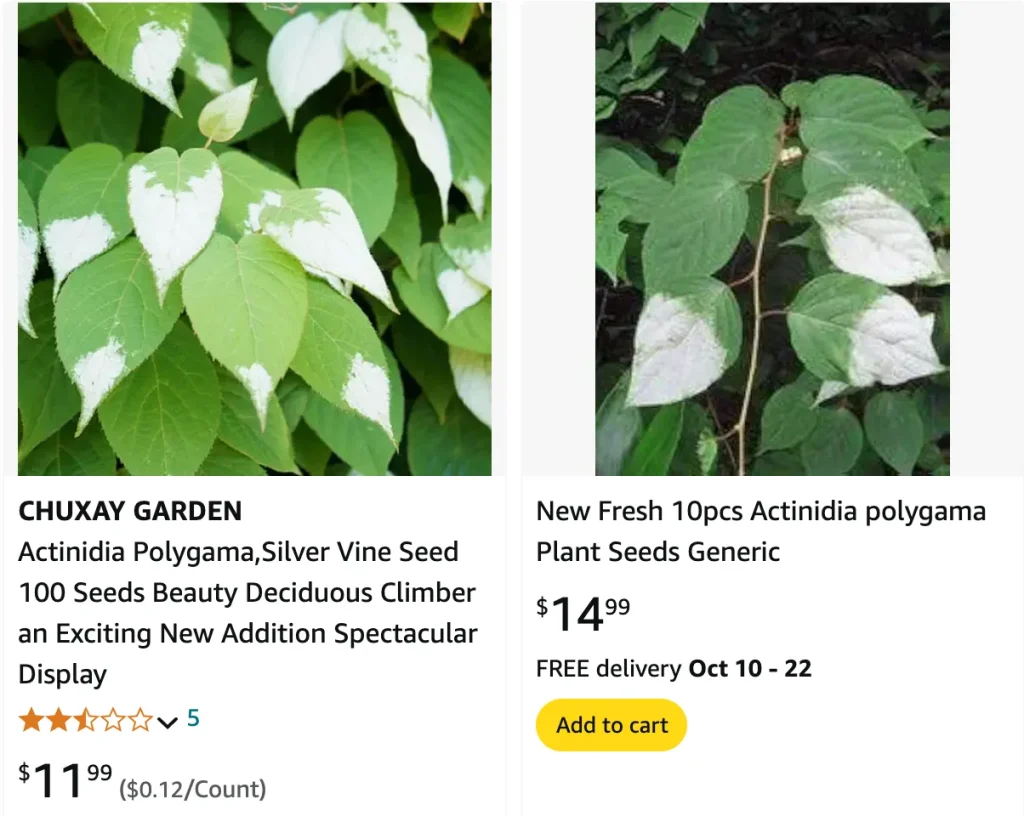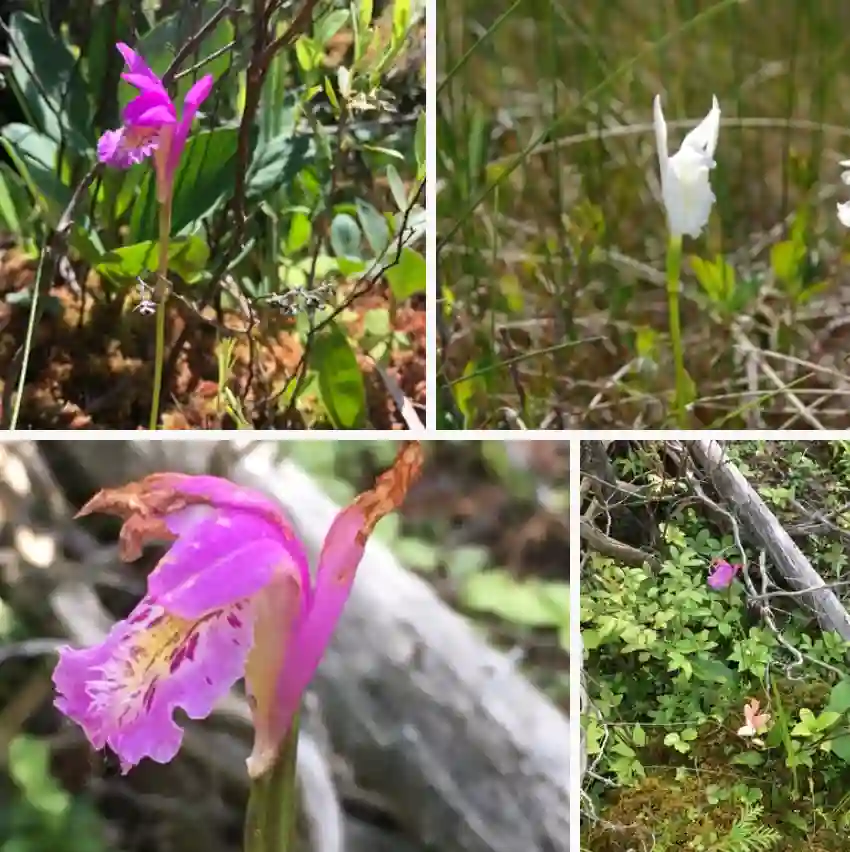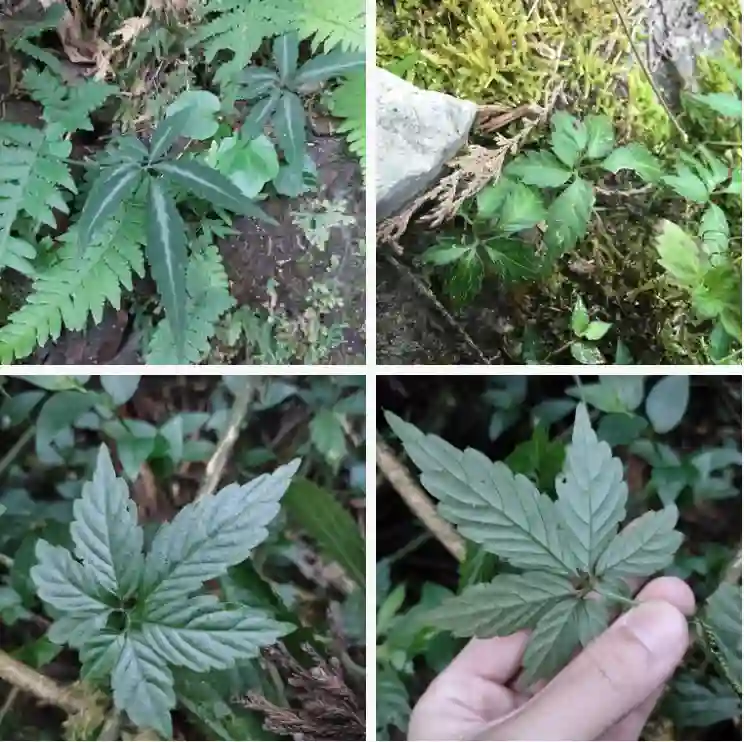
What Is Actinidia Polygama?
Actinidia Polygama, commonly known as the Silver Vine, belong to the Actinidiaceae family, is a strikingly unique plant native to East Asia, including China and Japan. Its distinguishing feature is its silver-green leaves with white undersides, giving it a silvery appearance. It belongs to the Actinidiaceae family, which also includes the kiwi fruit. Silver Vine is often admired for its ornamental value and is also known for its role in attracting cats, much like catnip.
Plant Family: 3 Genera in Actinidiaceae
How to Grow Actinidia Polygama?
Growing Actinidia Polygama can be a rewarding experience if you understand its needs. Here’s a basic guide to get you started:
- Location: Choose a location with partial shade to full sun. Silver Vine thrives in a spot where it receives dappled sunlight or morning sun with afternoon shade.
- Soil: Plant it in well-draining soil enriched with organic matter. A slightly acidic to neutral pH range is ideal. Ensure the soil remains consistently moist but not waterlogged.
- Spacing: Space your plants about 6 to 8 feet apart if you’re planting more than one. This allows ample room for growth as Silver Vine can spread quite extensively.
- Watering: Water the plant regularly, especially during dry periods. However, avoid overwatering as this can lead to root rot.
- Fertilizing: Feed the plant with a balanced, all-purpose fertilizer during the growing season to promote healthy growth and flowering.
How to Care for Actinidia Polygama?
Caring for Actinidia Polygama involves regular maintenance to ensure its health and vigor:
- Pruning: Prune the plant to control its size and shape, as well as to remove any dead or diseased wood. Pruning helps maintain a tidy appearance and encourages better air circulation.
- Pests and Diseases: Silver Vine is relatively pest-resistant but keep an eye out for common garden pests like aphids and spider mites. Fungal diseases can occur in overly wet conditions, so ensure proper drainage.
- Winter Care: In colder climates, mulch around the base of the plant to protect the roots during winter. In areas with harsh winters, consider providing additional protection or moving the plant to a more sheltered location.
How to Propagate Actinidia Polygama?
Propagation of Actinidia Polygama can be done through several methods:
- Cuttings: Take semi-hardwood cuttings in late summer or early fall. Dip the cuttings in rooting hormone and plant them in a well-draining potting mix. Keep the soil moist and provide indirect light until roots develop.
- Seeds: Growing from seeds is another option, though it requires patience. Stratify seeds by chilling them in the refrigerator for a few weeks before sowing. Plant seeds in a seed-starting mix and keep them in a warm, sunny location.
What to Plant With Actinidia Polygama?
Pair Actinidia Polygama with companion plants that complement its aesthetic and growth needs. Consider planting it alongside:
- Hostas: Their shade tolerance and foliage can create a lush backdrop for Silver Vine.
- Ferns: Provide additional texture and thrive in similar growing conditions.
- Astilbes: Their colorful blooms contrast beautifully with the plant’s silver leaves.
Can You Grow Actinidia Polygama Indoors?
While Actinidia Polygama prefers outdoor conditions, you can grow it indoors if you provide the right environment. Use a large pot with well-draining soil and place it in a bright, sunny window. Ensure it receives enough light and keep an eye on humidity levels. Indoor growth might not be as vigorous, but with the right care, it can still thrive.
Is Actinidia Polygama Toxic?
Actinidia Polygama is not known to be toxic to humans or pets. However, as with many plants, it’s best to prevent ingestion by pets and children to avoid any potential issues. If you have concerns, consult with your local poison control center or a plant expert.
Benefits of Actinidia Polygama
Actinidia Polygama offers several benefits:
- Ornamental Appeal: Its unique silver foliage makes it a striking addition to any garden.
- Cat Attraction: The plant has a similar effect to catnip, which can provide entertainment for your feline friends.
- Wildlife Friendly: Attracts various pollinators, adding biodiversity to your garden.
Common Problems with Actinidia Polygama
While generally low-maintenance, you might encounter a few issues:
- Leaf Drop: Can occur due to improper watering or extreme temperature changes.
- Poor Growth: May be a sign of nutrient deficiencies or insufficient light.
How Does Actinidia Polygama Compare to Other Plants?
Actinidia Polygama is often confused with other vines like the Kiwi (Actinidia deliciosa). While both are in the same genus, Silver Vine is more ornamental with its silver leaves, whereas Kiwi is grown primarily for its fruit.
In summary, Actinidia Polygama, or Silver Vine, is a fascinating plant with unique features and benefits. With proper care and attention, it can be a standout addition to your garden or home.
If i die, water my plants!



